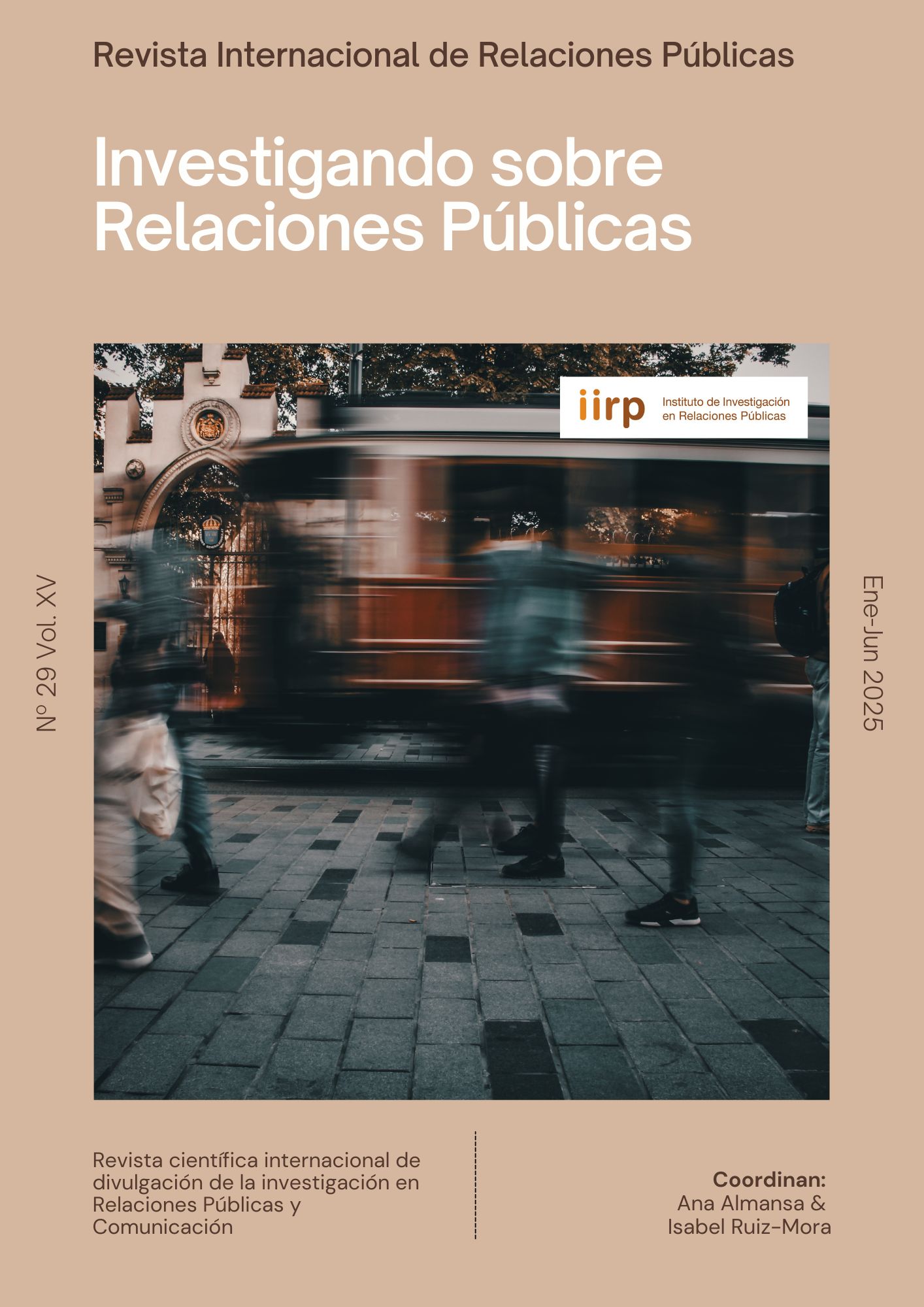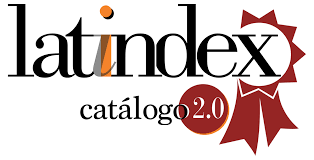Perceptions and expectations about the communication of Social Responsibility on social networks: reflections from a Portuguese university
DOI:
https://doi.org/10.5783/revrrpp.v15i29.890Keywords:
Active listening, Organizational Communication, Communication of Social Responsibility, Social media, UniversityAbstract
This research investigates the perceptions and expectations of stakeholders who follow the University of Minho (UMinho) on social media in relation to the communication about Social Responsibility (SR) carried out by the Institution in these environments. The growing public awareness of environmental, social and ethical issues has raised stakeholders’ expectations regarding the Social Responsibility practices adopted by organizations, as well as the way these initiatives are communicated to society. In recent decades, society has begun to observe and evaluate not only the results achieved by organizations, but also the means by which these results are obtained. In this context, aligning with the demands and expectations of the contemporary world has become essential for all institutions, including, in particular, universities. They have been increasingly urged to incorporate the principles of Social Responsibility into all their academic activities and to communicate this commitment in a transparent and accessible manner to society. Given this scenario, we raise the following questions: how important do stakeholders attribute to the Social Responsibility communication developed by the institution through social networks? What are their expectations regarding this communication? The methodology used was a case study with a quantitative approach, in which we used an online questionnaire applied to stakeholders who follow the University's social networks as a data collection instrument, totaling 506 responses. The results indicate that stakeholders consider it essential for the University to communicate about Social Responsibility, recognizing it as a relevant factor for transparency, credibility and building the institutional image. They also point out that social networks have acquired a central role in this process, since they are widely accessed by stakeholders and perceived as reliable sources for obtaining information about Social Responsibility initiatives. Although social networks are not considered by respondents as spaces for dialogue, the data indicate that they are already seen as favorable environments not only for accessing institutional information about Social Responsibility, but also as means that allow stakeholders to express their perceptions and expectations regarding the topic and to be heard by the Institution. This finding reinforces the need for the University to incorporate mechanisms that enable continuous monitoring of stakeholders' opinions and active listening, collaborating in the formulation and improvement of Social Responsibility actions. Active listening seeks to listen to understand others, creates an environment in which the public feels understood and valued, promoting the strengthening of the relationship between the organization and its stakeholders. In the context of social networks, it is associated with the strategy of continuously monitoring conversations, complaints and trends related to topics or brands of interest (Pomputius, 2019), analyzing and reflecting on the mentions made, perceiving the feelings expressed and responding with empathy. In the field of Social Responsibility, active listening enables organizations to better understand the expectations and concerns of their stakeholders, identify successes and opportunities for improvement, and prepare to develop actions that are more aligned with social demands. Finally, this research sought to contribute to the expansion of the academic debate on the communication of Social Responsibility carried out through social networks, especially in the university context, from the perspective of stakeholders, highlighting the importance of developing new digital strategies that strengthen the relationship between the University and society, as well as more effective Social Responsibility actions, aligned with society's expectationsDownloads
References
Aversano, N., Carlo, F. D., Sannino, G., Polcini, p. T., & Lombardi, R. (2020). Corporate social responsibility, stakeholder engagement, and universities: New evidence from the Italian scenario. Corporate Social Responsibility and Environmental Management, 27, 92–99. https://doi.org/10.1002/csr.1934
Barrage L., Chyn E., & Hastings J. (2020). Advertising and environmental stewardship: Evidence from the BP oil spill. American Economic Journal: Economic Policy, 12(1), 33-61. https://doi.org/10.1257/pol.20160555
Bentele, G., & Seidenglanz, R. (2008). Trust and Credibility: Prerequisites for Communication Management. Public Relations Research, 49–62). https://doi.org/10.1007/978-3-531-90918-9_4
Benthaus, J., Risius, M., & Beck, R. (2016). Social media management strategies for organizational impression management and their effect on public perception. The Journal of Strategic Information Systems, 25(2), 127–139. https://doi.org/10.1016/J.JSIS.2015.12.001
Bodie, G. D., St. Cyr, K., Pence, M., Rold, M., & Honeycutt, J. (2012). Listening competence in initial interactions I: Distinguishing between what listening is and what listeners do. International Journal of Listening, 26(1), 1-28. https://doi.org/10.1080/10904018.2012.639645
Bryman, A. (2021). Social Research Methods. Oxford.
Calderón, A. I. (2006). Responsabilidade social universitária: contribuições para o fortalecimento do debate no Brasil. Estudos: Revista da Associação Brasileira de Mantenedoras de Ensino Superior, 24(36), 35–55.
Capriotti, P. (2011). Communicating Corporate Social Responsibility through the Internet and Social Media. In Ø. Ihlen, J. L. Bartlett, & S. May (Eds.), The Handbook of Communication and Corporate Social Responsibility, 358–378. John Wiley & Sons.
Capriotti, P. (2017). The World Wide Web and the Social Media as Tools of CSR Communication. In S. Dieh, M. Karmasin, B. Mueller, R. Terlutter, & F. Weder (Eds.), Handbook of Integrated CSR Communication, 193–210. Springer.
Capriotti, P., & Zeler, I. (2020). Comparing Facebook as an interactive communication tool for companies in LatAm and worldwide. Communication and Society, 33(3), 119–136. https://doi.org/10.15581/003.33.3.119-136
Chu S.C., & Lin. J.S. (2013). Consumers’ perception of corporate social responsibility in the United States and China: A study of female cosmetics consumers. International Journal of Strategic Communication, 7 (1), 43-64. https://doi.org/10.1080/1553118X.2012.711401
Coombs, W. T., & Holladay, S. J. (2012). Managing Corporate Social Responsibility: a communication approach. Blackwell Publishing.
Gearhart, C. C., & Maben, S. K. (2019). Active and Empathic Listening in Social Media: What do Stakeholders Really Expect. International Journal of Listening, 35(3), 166–187. https://doi.org/10.1080/10904018.2019.1602046
Dawson, V. R. (2018). Organizing, Organizations, and the Role of Social Media Conversations. In P. J. Salem & E. Timmerman (Eds.), Transformative Practice and Research in Organizational Communication, 62–78. IGI Global.
Esposito, B., Sessa, M. R., Sica, D., & Malandrino, O. (2021). Corporate Social Responsibility Engagement through Social Media. Evidence from the University of Salerno. Administrative Sciences, 11(4), 147. https://doi.org/10.3390/admsci11040147
Freeman, R. E., Dmytriyev, S., & Strand, R. G. (2017). Managing for Stakeholders in the Digital Age. In Rasche A., Morsing M., & Moon J. (Eds.), Corporate Social Responsibility: Strategy, Communication and Governance, 136–153. Cambridge University Press.
Golob, U., Lah, M., & Jančič, Z. (2008). Value orientations and consumer expectations of Corporate Social Responsibility. Journal of Marketing Communications, 14(2), 83–96. https://doi.org/10.1080/13527260701856525
Grunig, J. E., & Hunt, T. (1984). Managing Public Relations. Rinehart and Winston.
Heath, R., Pearce, W. B., Shotter, J., Taylor, J., Deetz, S., Roper, J., Motion, J., & Zorn, T. (2006). The processes of dialogue: Participation and Legitimation. Management Communication Quarterly, 19(3), 341–375. https://doi.org/10.1177/0893318905282208
Isenmann, R. (2006). CSR Online: Internet Based Communication. Management Models for Corporate Social Responsibility, 247–254. Springer. https://doi.org/10.1007/3-540-33247-2_29
Kang, M. (2014). Understanding Public Engagement: Conceptualizing and Measuring its Influence on Supportive Behavioral Intentions. Journal of Public Relations Research, 26(5), 399–416. https://doi.org/10.1080/1062726X.2014.956107
Kent, M. L., & Taylor, M. (2016). From Homo Economicus to Homo dialogicus: Rethinking social media use in CSR communication. Public Relations Review, 42(1), 60–67. https://doi.org/10.1016/j.pubrev.2015.11.003
Kim, S., & Ferguson, M. A. (2014). Public Expectations of CSR Communication: What and How to Communicate CSR. Public Relations Journal, 8(3), 1–15. https://www.bellisario.psu.edu/assets/uploads/2014KIMFERGUSON.pdf
Kujala, J., Sachs, S., Leinonen, H., Heikkinen, A., & Laude, D. (2022). Stakeholder Engagement: Past, Present, and Future. https://doi.org/10.1177/00076503211066595
Kunsch, M. K. (2019). Prefácio. In Musse, C. F. (Ed.), Comunicação e Universidade: Reflexões Críticas. Editora Appris.
Lodhia, S., Kaur, A., & Stone, G. The use of social media as a legitimation tool for sustainability reporting: A study of the top 50 Australian Stock Exchange (ASX) listed companies. Meditari Accountancy Research, 28(4), 613–32. https://doi.org/10.1108/MEDAR-09-2019-0566
Lozano, R. (2011). The state of sustainability reporting in universities. International Journal of Sustainability in Higher Education, 12(1), 67–78. https://doi.org/10.1108/14676371111098311
Lyon, T. P., & Montgomery, A. W. (2015). The means and end of greenwash. Organization & Environment, 28(2), 223-249. https://doi.org/10.1177/1086026615575332
Macnamara, J. (2014). Organisational listening: A vital missing element in public communication and the public sphere. Asia Pacific Public Relations Journal, 15, 89–108.
Malhotra, N. K. (2006). Pesquisa de marketing: uma orientação aplicada. Bookman.
Mesquita, K., Ruão, T., & Andrade, J. G. (2020). Transformações da comunicação organizacional: Novas práticas e desafios nas mídias sociais. In Z. Pinto-Coelho, T. Ruão, & S. Marinho (Eds.), Dinâmicas comunicativas e transformações sociais. Atas das VII Jornadas Doutorais em Comunicação & Estudos Culturais, 281–303. CECS.
Mesquita, K. (2022). Comunicação da Responsabilidade Social na Internet: a divulgação de informações nos sites das Universidades Públicas do Maranhão. In Saraiva, L. S., Lago, F. W. G. do L., Gonçalves Júnior O. C., Santos, S. R. (Ed.), Relações públicas internacionais e mercados emergentes. EDUFMA.
Morsing, M. (2006). Strategic CSR communication: telling others how good you are. In Management Models for Corporate Social Responsibility. Berlin: Springer, 238–46.
Morsing, M. (2017). CSR Communication: What Is It? Why Is It Important? In Rasche, A., Morsing, M., & Moon, J. (Eds.), Corporate Social Responsibility: Strategy, Communication, Governance. Cambridge University Press.
Morsing, M., & Schultz, M. (2006). Corporate social responsibility communication: stakeholder information, response and involvement strategies. Business Ethics: a European Review, 15(4), 323–338. https://doi.org/10.1111/j.1467-8608.2006.00460.x
Nicolò, G., Aversano, N., Sannino, G., & Polcini, P. T. (2021). Investigating Web-Based Sustainability Reporting in Italian Public Universities in the Era of Covid-19. Sustainability, 13(6), 3468. https://doi.org/10.3390/SU13063468
Pomputius, A. (2019). Can You Hear Me Now? Social Listening as a Strategy for Understanding User Needs. 38(2), 181–186. https://doi.org/10.1080/02763869.2019.1588042
Ragas M.W., & Roberts. M.S. (2009). Communicating corporate social responsibility and brand sincerity: A case study of chipotle Mexican grill’s ‘food with integrity’ program. International Journal of Strategic Communication, 3(4), 264-280. https://doi.org/ 10.1080/15531180903218697
Rettab B., Brik A.B., & Mellahi K. (2009). A study of management perceptions of the impact of corporate social responsibility on organisational performance in emerging economies: The case of Dubai. Journal of Business Ethics, 89, 371-390, https://doi.org/10.1007/s10551-008-0005-9
Richardson, R. J. (2012). Pesquisa Social: Métodos e Técnicas. Atlas.
Ruiz-Mora, I. M. (2012). Las relaciones con los públicos y su reflejo en las memorias de Responsabilidad Social. Revista internacional de relaciones públicas, 2(4), 173-200.
Ruiz-Mora, I., Lugo-Ocando, J., & Castillo-Esparcia, A. (2016). Reluctant to talk, reluctant to listen: Public relations professionals and their involvement in CSR programmes in Spain. Public Relations Review, 42(3), 402-407.
Schlegelmilch, B. B., & Pollach, I. (2005). The Perils and Opportunities of Communicating Corporate Ethics. Journal of Marketing Management, 21(3–4), 267–290. https://doi.org/10.1362/0267257053779154
Schultz, F., & Wehmeier, S. (2010). Institutionalization of corporate social responsibility within corporate communications: Combining institutional, sensemaking and communication perspectives. Corporate Communications, 15(1), 9–29. https://doi.org/10.1108/13563281011016813/FULL/PDF
Sen, S., Bhattacharya, C. B., & Korschun, D. (2006). The role of corporate social responsibility in strengthening multiple stakeholder relationships: A field experiment. Journal of the Academy of Marketing Science, 34(2), 158–166. https://doi.org/10.1177/0092070305284978
Silva, Sonia. (2022). Comunicar a responsabilidade social: um modelo de atuação para as universidades públicas portuguesas. LABCOM-UBI.
Wanderley, L. S. O., Lucian, R., Farache, F., & De Sousa Filho, J. M. (2008). CSR information disclosure on the web: a context-based approach analysing the influence of country of origin and industry sector. Journal of Business Ethics, 82(2), 369–378. https://doi.org/10.1007/s10551-008-9892-z
Wang, Y., & Fesenmaier, D. R. (2004). Modeling participation in an online travel community. Journal of Travel Research, 42(3), 261–270. https://doi.org/10.1177/0047287503258824
Yin, R. K. (2010). Estudo de caso: planejamento e métodos. Bookman.
Downloads
Published
How to Cite
Issue
Section
License
Copyright (c) 2025 Kamila Mesquita, Teresa Ruão, José Gabriel Andrade

This work is licensed under a Creative Commons Attribution-NonCommercial-NoDerivatives 4.0 International License.
Authors publishing in this journal agree to the following terms:
a. Authors retain copyright and grant the journal the right to be the first publication of the work as licensed under a Creative Commons Attribution License that allows others to share the work with an acknowledgement of authorship of the work and initial publication in this journal.
b. Authors may separately enter into additional arrangements for non-exclusive distribution of the version of the work published in the journal (e.g., placing it in an institutional repository or publishing it in a book), with an acknowledgement of initial publication in this journal.
c. Authors are allowed and encouraged to disseminate their work electronically (e.g. in institutional repositories or on their own website) before and during the submission process, as it can lead to productive exchanges, as well as earlier and higher citation of published work (see The Effect of Open Access).





